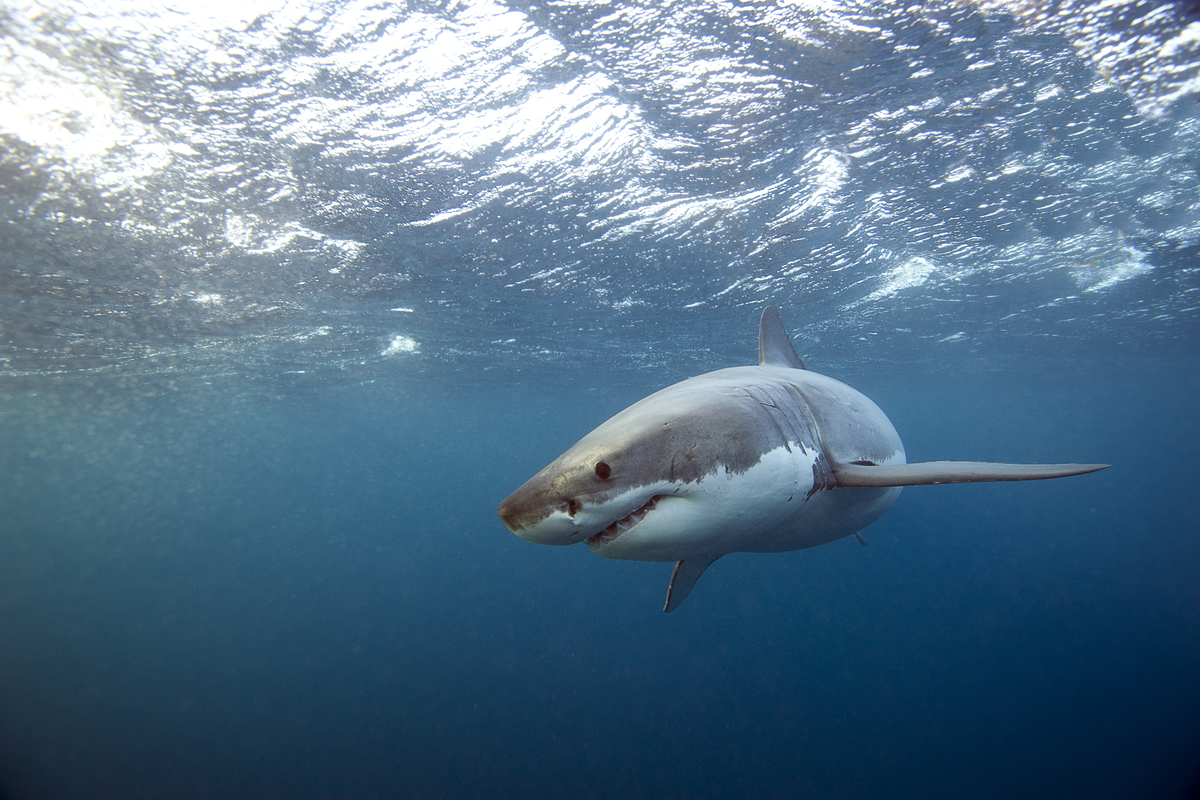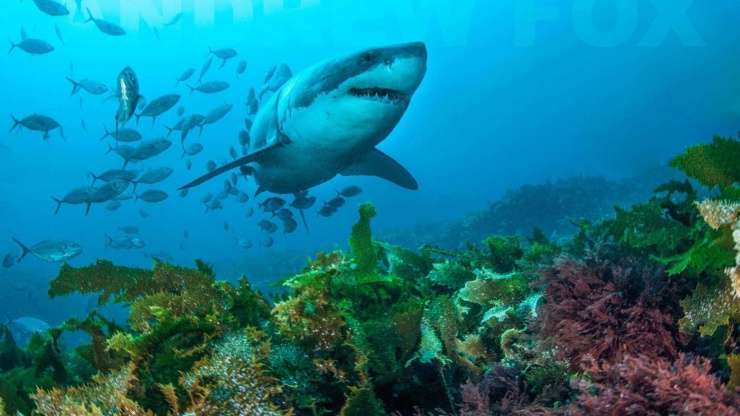
Scientists familiar with shark ecology and behaviour are also expert in visually estimating shark size, according to new research published by The Royal Society.
The study found Flinders University Southern Shark Ecology Group experts more accurate at visually assessing the size of white sharks than tourists or staff from the cage-diving industry – giving this non-invasive method of identification credence compared to other direct methods of measuring these large marine animals in the wild.
The assessment followed extensive stereo-video measurements of white shark (Carcharodon carcharias) encounters during cage-diving expeditions off South Australia’s Neptune Islands, near Port Lincoln.
Stereo-camera footage and visual length estimates of C. carcharias were collected at the cage-diving area near the Neptune Islands Group Marine Park at the mouth of Spencer Gulf in South Australia between February 2017 and May 2018.
The site, about 60 km south of Port Lincoln, has a consistent year-round shark population supporting Australia’s only white shark cage-diving industry, consisting of three operators. An estimated 10,000 tourists take part in the activity every year.
Flinders University biological sciences researcher Cameron May says the study set out to quantify the accuracy of the regular technique of using visual length estimates to determine the length of white sharks.

The accuracy of visually-estimated total length measurements in relation to suspected biases were compared to the actual white shark stereo-video measurements.
“Our findings show that experience measuring animals is the most substantial driver of accuracy, regardless of amount of exposure to the species,” he says.
“Scientists were most accurate, even though crew observes white sharks more frequently.”
Observer experience had the greatest effect on accuracy, with scientists being more accurate (23.0 ± 16.5 cm) than crew (39.9 ± 33.8 cm) and passengers (49.4 ± 38.5 cm).
This shows that scientists can use their visual length estimates in situations when direct measurements are not practically possible. In contrast, accuracy of tourists asked to carefully estimate size was about 50 cm.
The knowledge of a shark’s size is vital in many biological or ecological studies, for example when assessing growth rate, size-at-maturity, or changes in habitat or diet with age.
Research leader of the Southern Shark Ecology Group, Associate Professor Charlie Huveneers from Flinders University’s College of Science and Engineering, says: “Our results show that visual length estimates are not impacted by shark size and are a valid measurement tool for many aspects of white shark research, provided they come from people who have previously been involved in measuring animals.”
The research group focuses on the biology, ecology and population status of sharks and rays, as well as assessments of their vulnerability to fishing pressure, interactions with humans – including shark tourism and shark bite mitigation measures – and related public perceptions.
The paper, ‘Eyes on the size: Accuracy of visual length estimates of white sharks, Carcharodon Carcharias,’ by Cameron May, Lauren Meyer, Sasha Whitmarsh and Charlie Huveneers, has been published in Royal Society Open Science. http://dx.doi.org/10.1098/rsos.190456
Using technology such as photography-aided methods helps researchers overcome the need for direct or physical measurements of marine species.
Now this study also shows that experienced scientists also have a good level of accuracy in visual assessment of large aquatic organisms, including sharks and cetaceans, the paper concludes.
The study was funded by the State Department for Environment and Water and supported by the white shark cage-diving industry as well as volunteers and observers.

